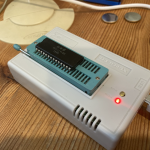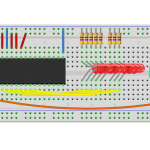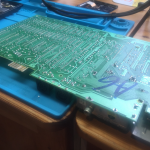Fixing a Poorly Commodore 64 (Part 3)
So far I’ve been able to test the 6510 CPU using a NOP tester circuit on a breadboard, the 4164 DRAM chips using a £20 Arduino-based DRAM tester by Stephen Vickers, and the logic chips using my trusty TL866II+ EPROM programmer. Which got me thinking. Is there an easy way to test whether the PLA I’d removed from my C64 was working or not. Like the MOS logic chips, these have a reputation for failing. …



